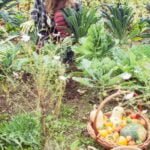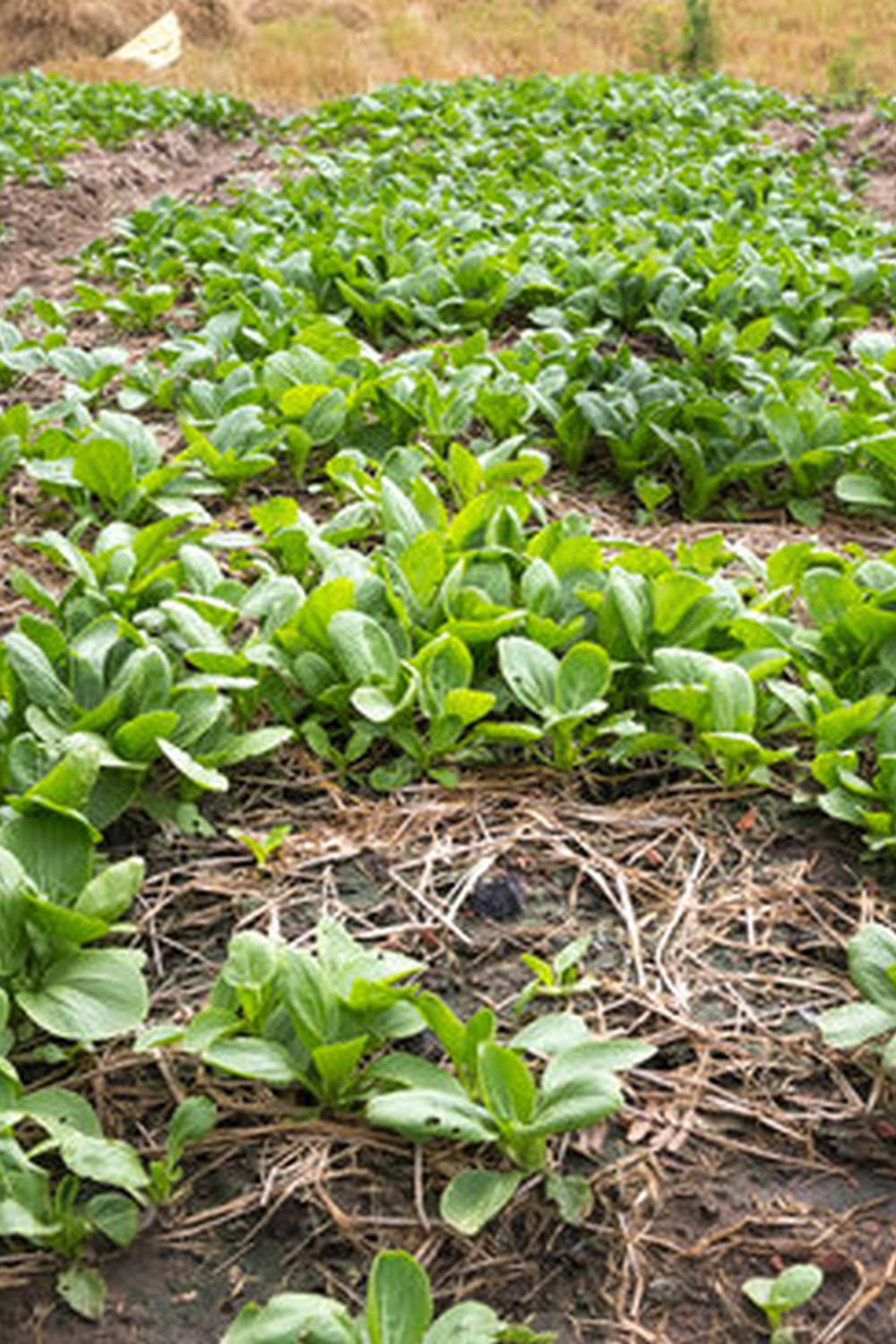Are you wondering what soil to use in raised bed vegetable gardens? Choosing the right soil is a critical factor in the success of your garden. Raised bed gardening offers several benefits, such as improved drainage and soil structure, increased warmth for plants, and better accessibility for gardeners. However, to make the most of these advantages, it’s essential to select the optimal soil for your raised beds.
The composition of soil plays a crucial role in providing the necessary nutrients and support for healthy plant growth. Understanding the basics of soil composition, including its structure and texture, is fundamental to creating a thriving vegetable garden in raised beds. Additionally, knowing the ideal pH level and nutrient levels required for vegetable plants will help you make informed decisions about the type of soil to use.
To ensure that your raised bed vegetable garden flourishes, it’s important to consider factors such as drainage and aeration in the soil. By improving these aspects, you can prevent waterlogging and root rot which can result from poor soil conditions. Furthermore, organic soil amendments and fertilizers offer a natural way to enrich the soil in raised beds for long-term health and productivity.
Understanding the Basics of Soil Composition
Soil is made up of a variety of components, including mineral particles, organic matter, water, and air. The combination and arrangement of these components determine the soil’s structure and texture, both of which are crucial for plant growth.
Components of Soil
The mineral component of soil consists of different-sized particles such as sand, silt, and clay. The organic matter in soil includes decomposed plant and animal material, which is essential for providing nutrients to plants. Water and air make up the pore spaces in soil, allowing roots to access water and oxygen.
Importance of Soil Structure and Texture
Soil structure refers to the way individual soil particles clump together to form aggregates. Good soil structure allows for adequate drainage and aeration while preventing compaction. Soil texture refers to the relative proportions of sand, silt, and clay in the soil. The texture affects how well the soil retains water and nutrients.
Understanding these basic elements of soil composition is essential for making informed decisions when choosing the right type of soil for raised bed vegetable gardens. By selecting a suitable soil mix with the right structure and texture, gardeners can provide their plants with an optimal growing environment.
Ideal Soil pH and Nutrient Levels for Vegetable Gardens
Understanding the ideal soil pH and nutrient levels for vegetable gardens is crucial to ensure optimal plant growth and a bountiful harvest. The pH level of soil refers to its acidity or alkalinity, which can significantly influence the availability of essential nutrients to plants. Most vegetables thrive in slightly acidic soil with a pH range of 6.0 to 7.0. Soil that is too acidic or too alkaline can result in nutrient deficiencies, stunted growth, and poor yields.
In addition to pH, it is important to consider the nutrient levels in the soil when planning a vegetable garden. The primary macronutrients required by vegetables are nitrogen (N), phosphorus (P), and potassium (K), often referred to as NPK. These nutrients play essential roles in various aspects of plant growth, such as leaf development, root growth, flowering, and fruit production. It is necessary to ensure that the soil has adequate levels of these macronutrients to support healthy plant growth.
To determine the pH and nutrient levels of the soil, home gardeners can use DIY testing kits available at local garden centers or send samples to professional laboratories for comprehensive analysis. Once the current state of the soil is assessed, adjustments can be made by adding amendments such as lime to raise the pH or elemental sulfur to lower it. Similarly, organic or synthetic fertilizers can be utilized to supplement any deficiencies in essential nutrients based on soil test results.
Accordingly, maintaining proper soil pH and nutrient levels is an ongoing process that may require periodic testing and amending throughout the growing season. By ensuring an optimal growing environment for vegetable plants, home gardeners can promote vigorous growth, disease resistance, and high-quality produce from their raised bed gardens.
| Soil Element | Ideal Level |
|---|---|
| pH | 0 – 7.0 |
| Nitrogen (N) | Adequate levels for vigorous plant growth |
| Phosphorus (P) | Adequate levels for healthy root development and flowering |
| Potassium (K) | Adequate levels for disease resistance and fruit production |
Recommended Soil Types for Raised Bed Vegetable Gardens
When it comes to choosing the right soil for raised bed vegetable gardens, there are a variety of options to consider. The most commonly used soil types include topsoil, compost, and potting mix. Topsoil is the upper layer of soil that is rich in nutrients and organic matter. It can provide a good base for raised bed gardens, especially when mixed with other components such as compost or peat moss to enhance its texture and drainage.
Compost is another popular choice for raised bed vegetable gardens as it is the result of decomposed organic matter. Compost not only enriches the soil with essential nutrients but also improves its structure and water retention capacity. However, it’s important to ensure that the compost used in raised beds is well-aged and fully decomposed to avoid any potential issues with plant growth.
Potting mix is a commercially available soil option that is specifically designed for container gardening, including raised beds. It typically consists of a blend of different materials such as peat moss, perlite, vermiculite, and sometimes added fertilizers.
While convenient to use, potting mix may need to be supplemented with additional organic matter or nutrients over time to support the long-term health of plants in raised beds. Each type of soil has its own advantages and disadvantages, so it’s important for gardeners to weigh these factors based on their specific needs and preferences before making a decision.
Tips for Improving Soil Drainage and Aeration
When it comes to growing vegetables in raised bed gardens, proper soil drainage and aeration are crucial for the overall health and success of your plants. Without adequate drainage, soil can become waterlogged, leading to root rot and other issues that can harm your crops. Here are some tips for improving soil drainage and aeration in your raised bed vegetable garden:
- Use raised beds with good drainage: Raised beds should have adequate drainage holes at the bottom to allow excess water to escape. This prevents water from accumulating at the root level and causing damage to the plants.
- Add organic matter: Incorporating organic matter such as compost or well-rotted manure into the soil can improve its structure and drainage capabilities. Organic matter also helps create air pockets in the soil, promoting better aeration.
- Avoid compacting the soil: Be mindful of walking or placing heavy objects on the soil within your raised beds, as this can lead to compaction. Compacted soil restricts air and water movement, negatively impacting plant growth.
Improving soil drainage and aeration is essential for creating an optimal growing environment for your vegetable plants in raised beds. By following these tips, you can ensure that your plants have access to the right amount of water, air, and nutrients they need to thrive. Additionally, maintaining healthy soil conditions will contribute to higher yields and better overall plant health throughout the growing season.
Organic Soil Amendments and Fertilizers
When it comes to maintaining the health and fertility of the soil in raised bed vegetable gardens, organic soil amendments and fertilizers play a crucial role. By enriching the soil with natural compounds, gardeners can ensure that their plants receive the necessary nutrients for optimal growth. Here are some key considerations for using organic soil amendments and fertilizers in raised bed vegetable gardens:
- Types of Organic Soil Amendments: There are various types of organic materials that can be used to improve the structure and nutrient content of the soil in raised beds. Common examples include compost, aged manure, leaf mold, and peat moss. Each type of amendment has unique properties that contribute to the overall health of the soil.
- Benefits of Organic Fertilizers: Organic fertilizers provide essential nutrients to plants while promoting beneficial microbial activity in the soil. Unlike synthetic fertilizers, organic options release nutrients slowly over time, reducing the risk of nutrient leaching and environmental pollution.
- Application Methods: When adding organic amendments and fertilizers to raised bed gardens, it’s important to follow recommended application rates and techniques. For example, compost can be mixed into the top few inches of soil before planting, while organic fertilizers may be applied periodically throughout the growing season.
In addition to providing valuable nutrients and improving soil structure, organic amendments such as compost also help retain moisture in the soil and support a healthy population of beneficial microorganisms. By incorporating these natural elements into the growing environment, gardeners can create a sustainable and nourishing habitat for their vegetable plants.
Overall, understanding how to effectively utilize organic soil amendments and fertilizers is an essential aspect of maintaining healthy and productive raised bed vegetable gardens. By harnessing the power of natural materials to enhance soil fertility, gardeners can create an environment where their favorite vegetables will thrive year after year.
Testing and Amending Existing Garden Soil
When starting a new raised bed vegetable garden, it’s important to assess the existing soil to determine its quality and composition. Testing the soil will help you identify any deficiencies or imbalances that need to be addressed before planting your vegetables.
How to Test the Existing Soil
There are several methods for testing your garden soil, including DIY soil test kits and professional laboratory testing. A DIY test kit can provide basic information about the pH level and nutrient levels in your soil. For a more comprehensive analysis, consider sending a sample of your soil to a professional laboratory for testing. This will give you detailed information about the nutrient content, pH level, and any contaminants present in the soil.
Steps for Amending the Soil
Once you have identified any issues with your existing garden soil, it’s time to make amendments to create an optimal growing environment for your vegetables. Common amendments include adding organic matter such as compost, manure, or peat moss to improve the texture and nutrient content of the soil. Lime or sulfur may be added to adjust the pH level if needed. It’s important to thoroughly mix these amendments into the existing soil to ensure even distribution.
Creating the Ideal Growing Environment
By testing and amending your existing garden soil, you can create an ideal growing environment for your raised bed vegetable garden. The goal is to provide a well-balanced soil that is rich in nutrients, has good drainage and aeration, and is at the appropriate pH level for vegetable plants. Taking the time to address any issues with your existing soil will set the stage for healthy plant growth and bountiful harvests in your raised bed garden.
Common Mistakes to Avoid When Choosing Soil for Raised Beds
When it comes to choosing soil for raised bed vegetable gardens, there are several common mistakes that gardeners should avoid. One major mistake is using regular garden soil without proper amendments. Garden soil can be too compacted and may not provide the ideal environment for plant roots to thrive in a raised bed. It’s important to ensure that the soil used in raised beds is loose, well-draining, and nutrient-rich to support healthy plant growth.
Another common mistake is relying solely on one type of soil or amendment. While topsoil may be an essential component, it’s important to also incorporate other materials such as compost, potting mix, and organic fertilizers to create a balanced and fertile growing medium. Using a combination of different soil types can help improve soil structure, drainage, and nutrient levels for optimal plant growth.
Additionally, some gardeners make the mistake of not testing their existing garden soil before filling the raised beds. Without proper testing, it’s difficult to know the pH level and nutrient content of the soil.
By neglecting this step, gardeners may end up with suboptimal growing conditions for their vegetables. It’s crucial to test the existing garden soil and make necessary amendments to ensure that the raised bed contains the right balance of nutrients and pH levels for healthy plant growth.
Conclusion
In conclusion, the choice of soil for raised bed vegetable gardens is a crucial factor in determining the overall health and productivity of the plants. By understanding the basics of soil composition, ideal pH levels and nutrient requirements, gardeners can make informed decisions about which type of soil to use. From traditional topsoil to nutrient-rich compost and specialized potting mixes, there are various options available, each with its own advantages and disadvantages.
It is important for gardeners to remember that soil drainage and aeration play a significant role in preventing waterlogged conditions and root rot. By implementing methods to improve these aspects of the soil, such as adding organic amendments and using suitable fertilizers, the overall health of the raised bed garden can be enhanced. Additionally, regularly testing and amending existing garden soil is essential for creating an optimal growing environment for vegetables.
Finally, while it is important to be mindful of common mistakes to avoid when choosing soil for raised beds, it is also encouraged for readers to experiment with different soil types and amendments in order to find the best fit for their specific garden. With proper care and attention to selecting and maintaining the right soil, raised bed vegetable gardens can thrive and yield bountiful harvests for years to come.

If you’re looking to get into vegetable gardening, or are just looking for some tips on how to make your current garden better, then you’ve come to the right place! My name is Ethel and I have been gardening for years. In this blog, I’m going to share with you some of my best tips on how to create a successful vegetable garden.





